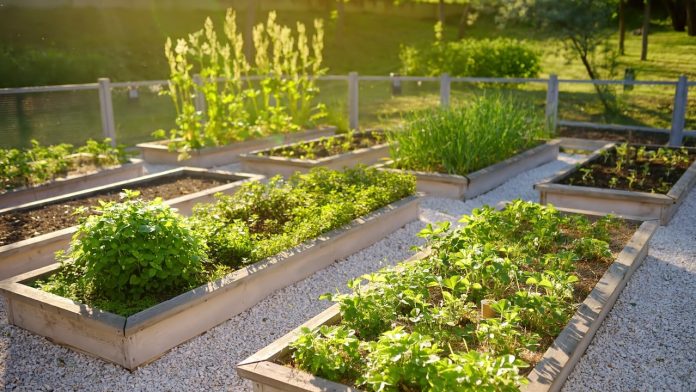By Adriana Copaceanu | Wealth of Geeks
Food prices across the board are predicted to increase by 1.3%, according to the latest consumer pricing analysis from the United States Department of Agriculture (USDA). Restaurant dining will see the largest increase – an average of 4.7% and may go as high as 6.2%.
As food costs rise in 2024, even more pennies are squeezed from our monthly budgets. More and more Americans are turning to their own backyards to offset the cost of eating. Planting a garden can save you hundreds of dollars, and for some families, that adds up to thousands of dollars in savings annually.
New Gardener Success
A recent study from Axiom showed that 69.7% of people polled said they would plant more and expand their gardens in 2024.
70.8% of novice gardeners felt their garden activities in 2023 were successful. As a result, they plan to increase their efforts for 2024. How much money can growing your own food save families?
Growing Savings
According to Garden Pals, growing at least some food can save approximately $600 annually. The average garden starts with just $70, giving the average person $530 in net savings. Not bad for a humble patch of dirt.
While many people might feel intimidated by produce propagation, there are plenty of guides for growing vegetables, fruits, and more.
Katy Willis, a writer for Wealth of Geeks, says, “I save around 70% on my fresh produce from my food garden, but that includes chicken and quail eggs, and some foraging. I also barter some excess and preserved produce for fresh game meat. I started on a smaller scale around 18 years ago, and it’s slowly grown. I like knowing the food I’m feeding my family is natural and healthy, and being so self-reliant saves me money and gives me food security.”
Anna Chesley of Salt In My Coffee shares, “Growing up, my mother grew an impressive percentage of the vegetables that fed our family in a 40 feet by 40 feet backyard garden. So when I started my homestead and had kids of my own, it was only natural for me to garden, too. Most years, I save more than $1,500 on our yearly grocery bill by growing most of our fresh summer vegetables and filling my shelves for winter with jars of home-canned tomato sauce, green beans, beets, and more. It’s hard work, but we eat well, and it’s very rewarding.”
Small Beginnings
Gardening doesn’t have to take up a whole backyard to help support your food supply; new gardeners can start their modest harvest in a pot or small plot of dirt.
The report found that the average American vegetable garden is 600 square feet. However, most people start with a much smaller plot. According to Garden Pals, the average garden is just 96 square feet.
The average 600-square-foot garden will produce about $600 of produce per year. Despite these savings, only 35% of U.S. households grow vegetables, fruits, and other food.
Builder reports that about 70% of Americans live in houses, while approximately 17% live in condos or apartments. Even those living in apartments can grow something as simple as tomatoes in a pot on a balcony. Tomatoes top the list of vegetables to grow, with cucumbers in second place and sweet peppers in third.
One of the driving factors in growing produce at home is ensuring the quality of produce. 69.6% of novice gardeners indicated that growing food organically was essential, and another 69.6% placed high importance on enjoying local produce.
Despite the lack of experience, rookie gardeners know what they want when they shop for seeds and plants. If their local stores do not carry the variety or kinds of plants they want, 40.8% said they would travel up to 10 miles to obtain their ideal plant, with 46.8% of males indicating this willingness and only 35.9% of females.
Knowing Where To Start
To start growing your food, you need basic knowledge of what you want and a place to start planting.
Beginner gardeners should start with the decision of what to sow and research your selection. Each type of plant has its own needs and requirements, so it’s best to be aware of these before you begin planting.
Choose your spot well. A fruitful garden relies on sun exposure, so seek a site that receives around seven or eight hours of direct sunlight.
Container gardening is an excellent option for those with limited space. Compact planters allow growers to move plants around to get the most sunlight, and movability adds an element of customization that a conventional garden may not.
Seeding Savings
While growing produce may include new costs, in the long run, you’ll save more. And home gardens don’t have to be extravagant to be fruitful. Home horticulturists don’t need all the latest and greatest gardening gadgets. Start with what you have and contribute to your plot over time. With some dedication, growers will harvest their crops — and savings — in no time.
This article was produced by Media Decision and syndicated by Wealth of Geeks.




